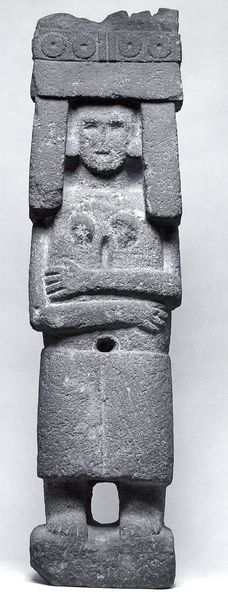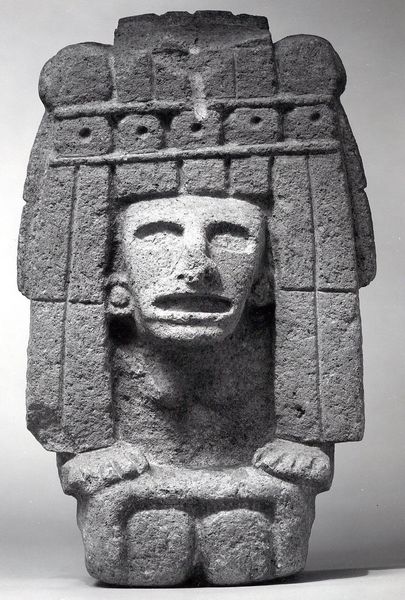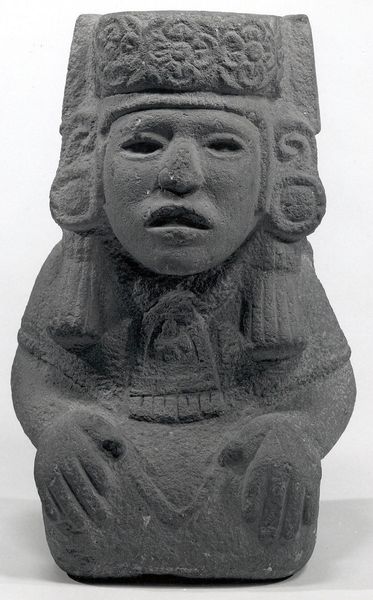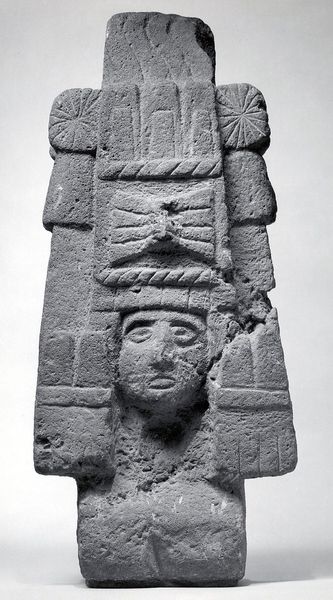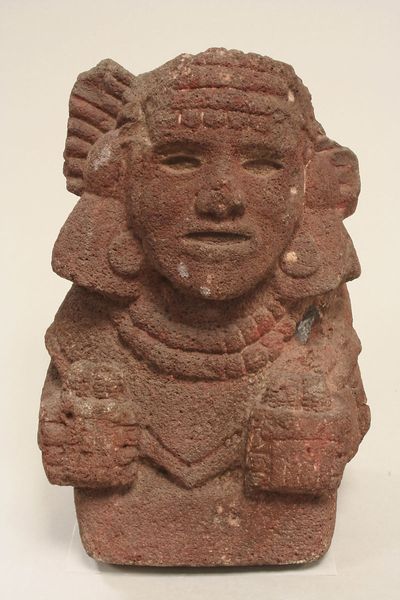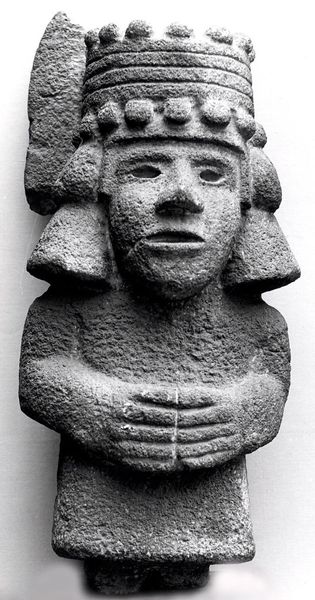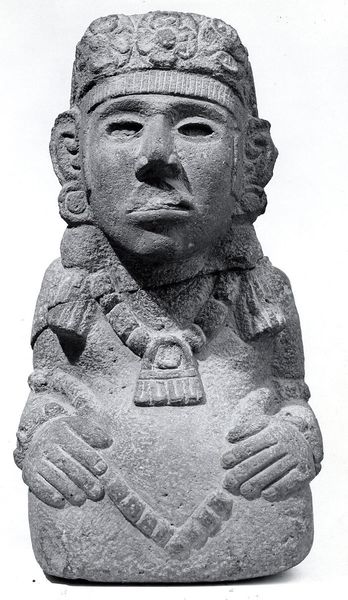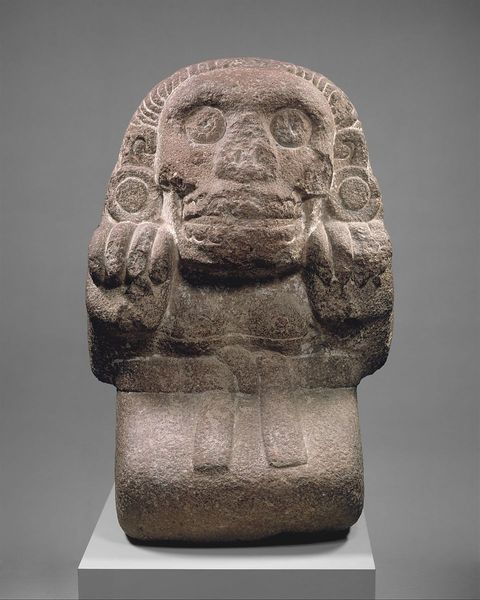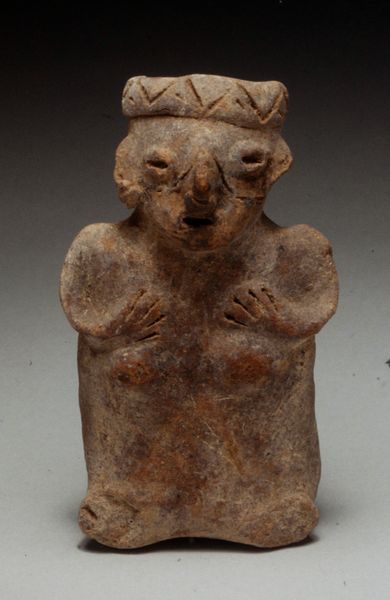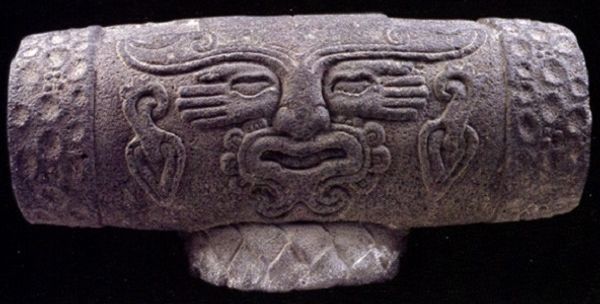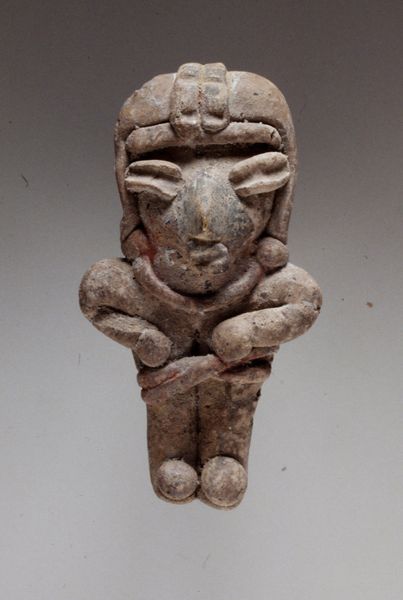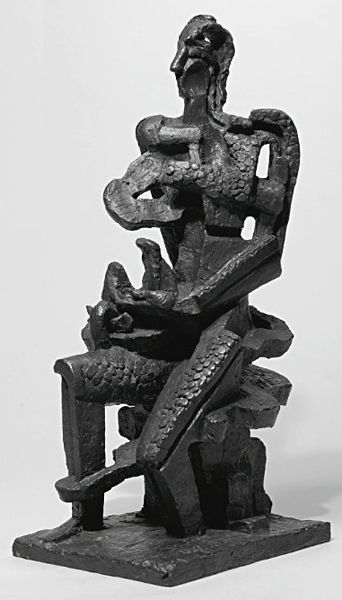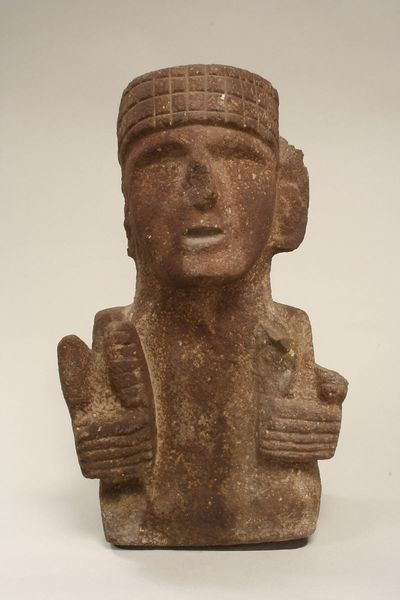
carving, sculpture
#
3d sculpting
#
3d model
#
carving
#
3d printed part
#
sculpture
#
detailed texture
#
sculptural image
#
figuration
#
form
#
unrealistic statue
#
3d shape
#
sculpting
#
sculpture
#
statue
#
indigenous-americas
Copyright: Public domain
Editor: Here we have a sculpture titled "Female Deity," currently housed in the Metropolitan Museum of Art. Crafted through carving, it strikes me as both imposing and serene. What do you see in this piece, and how do you interpret its significance? Curator: I see a powerful statement about gender, representation, and cultural memory. This sculpture invites us to question Western art historical biases. How do we understand the concept of "deity" when divorced from European artistic traditions? Consider the function this object served within its original social and political context. Can we move past simply analyzing its form to engage with the belief systems and power structures it embodied? Editor: That’s fascinating! I hadn’t really thought about the inherent biases I bring to it, seeing it through a Western lens. The notion of power structures makes me wonder—were there limitations on how female deities were represented in Aztec art? Curator: Absolutely. We must recognize the intersections of gender, power, and religious belief within Aztec society. While this figure embodies divinity, it also potentially reflects specific ideologies regarding female roles and authority. It encourages us to critically examine the assumptions we project onto the past. It can also invite critical engagement of the present; How can we apply this scrutiny to Western power structures? Editor: I’m starting to see how art from the past can really inform how we challenge assumptions today. Thanks for broadening my perspective on how to read this work. Curator: And thank you for your insights! Thinking about visuality can reshape our political engagement within current socio-cultural structures and thinking of what constitutes a 'Deity' enables us to rethink other imposed hegemonies and limitations.
Comments
No comments
Be the first to comment and join the conversation on the ultimate creative platform.
